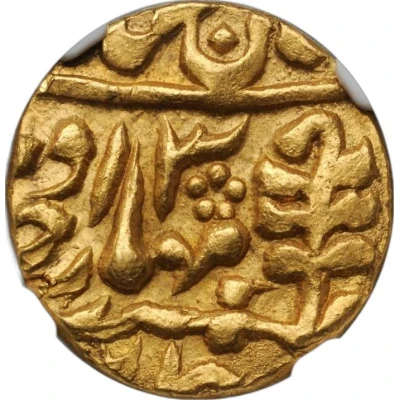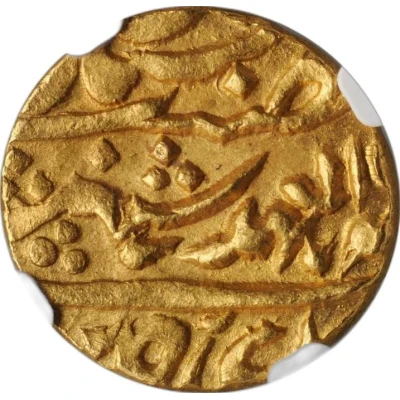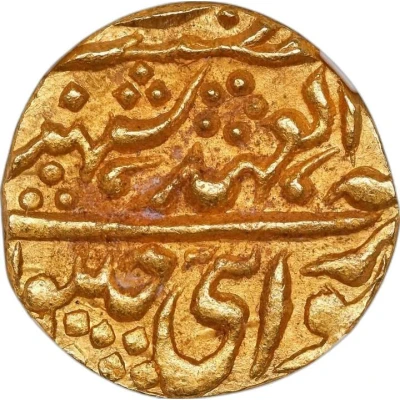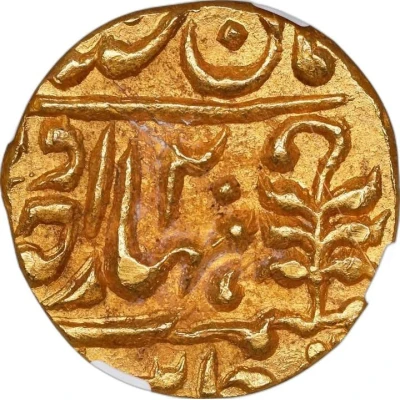


© Stacks Bowers
1 Mohur - Man Singh II and George V
| Gold | 10.7 g | - |
| Issuer | Princely state of Jaipur |
|---|---|
| Maharaja | Man Singh II (1922-1949) |
| Type | Standard circulation coin |
| Years | 1923-1928 |
| Value | 1 Mohur (16) |
| Currency | Rupee (1621-1949) |
| Composition | Gold |
| Weight | 10.7 g |
| Shape | Round |
| Technique | Hammered |
| Orientation | Medal alignment ↑↑ |
| Demonetized | 1949 |
| Updated | 2024-10-05 |
| Numista | N#420103 |
|---|---|
| Rarity index | 97% |
Reverse
Writing in Persian detailing date, king and value.
Script: Persian
Edge
Plain
Comment
Sawai Jaipur Mint. Various dates issued shortly after the ascension of Man Singh II. A later mintage in the 1940s is similar to this coin. Under George V as Emperor with a weight varying between 10.7 to 11.4 grams. Unknown purity
Interesting fact
The 1 Mohur coin from the Princely state of Jaipur, featuring Man Singh II and George V, has a unique feature - it has a small hole at the center of the coin, which was used to thread a string or cord through, allowing the coin to be worn as a pendant or amulet. This feature was a common practice in ancient India, where coins were often used as talismans or symbols of good luck.
![1 Mohur - Victoria [Madho Singh] front](/storage/images/1-Mohur-Victoria-Madho-Singh_315620_1.webp)
![1 Mohur - Victoria [Madho Singh] back](/storage/images/1-Mohur-Victoria-Madho-Singh_315620_2.webp)

